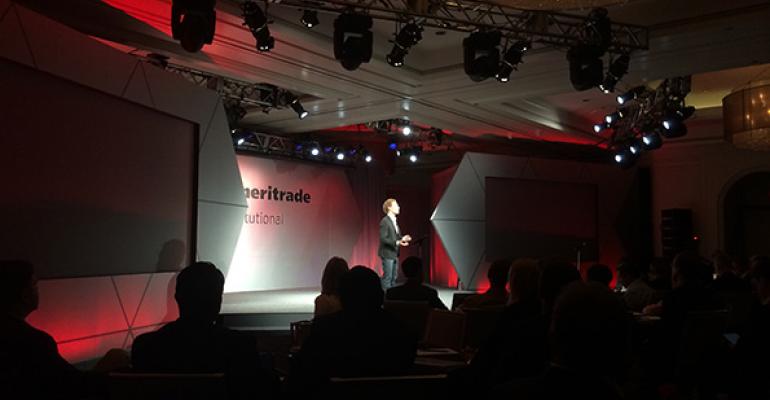With the proliferation of social media and online channels, many people might guess that a large percentage of word of mouth happens online. But, in fact, 10 times more word of mouth happens offline than online, Jonah Berger, associate professor of marketing at the Wharton School of the University of Pennsylvania, told advisors during TD Ameritrade’s Elite Summit in Laguna Beach, Calif. And word of mouth can be very effective; it generates more than twice the sales of advertising.
How do advisors get word of mouth? Getting clients to talk and share about you is a science, not luck, Berger said.
The first step to getting people to talk and share is what Berger calls “social currency.” This involves making people feel like insiders. When you give clients access to information no one else has, this makes them look smart. For example, Please Don’t Tell is a bar in New York that has no sign on the outside, and doesn’t make itself known. You have to know about it, and you have to have a reservation to get in. Yet the place is always packed.
How can you make clients feel like insiders? Berger recommends finding the inner remarkability—something surprising, novel or interesting about you or your practice.
Another way advisors can use word of mouth is through triggers. “Top-of-mind means top of tongue,” Berger said. It’s not just about whether clients like you, it’s also about whether they’re thinking about you. Clients are probably thinking and talking about you right after they have an interaction with you. But the key is to keep them talking about you. That requires a trigger. When you see peanut butter, for example, you think of jelly. When you see the beach, you think of Corona beer.
“What’s your peanut butter? What is the thing in the environment that will remind people of you even when you’re not around?”
Emotions can also drive sharing. In his research, Berger found that even negative emotions like anxiety and anger increase sharing because they arouse actions. Whereas when you’re sad or content, you don’t want to do much. High arousal, or activating emotions, whether they’re positive or negative, create more sharing, and low arousal, or deactivating emotions, decreases sharing.
Stories are also very important to get people to share. People don’t share information; people share stories. If you tell clients a story, they’re much less likely to forget and much more likely to take action.
“No one tells bedtime facts,” Berger said. “They tell bedtime stories.”




